7 Nights Corfu Yacht Charter Itinerary
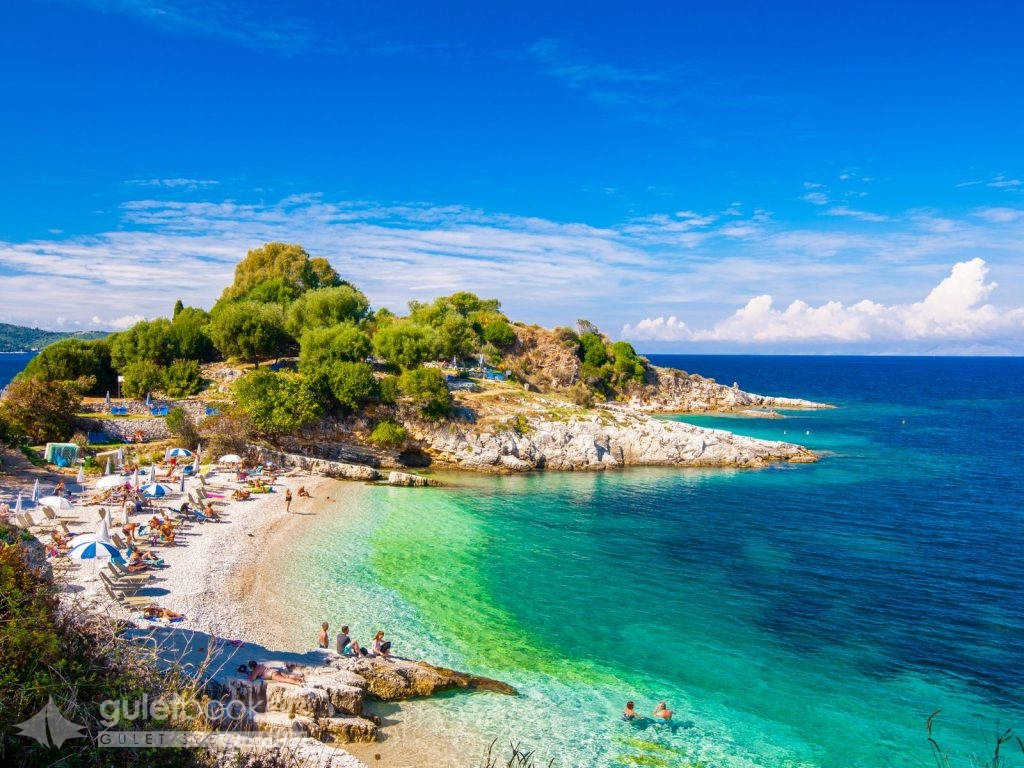
Cosmopolitan Kerkyra is probably the best-known Ionian island and one of the Mediterranean’s most popular destinations. It attracts hundreds of thousands of tourists annually and is an inexhaustible source of artistic inspiration. Its enormous cultural heritage, combined with its natural beauty, ideal climate, inviting beaches, and noteworthy sights make it a prestigious and attractive destination for Greek and foreign visitors alike.
Kerkyra was named after a woman. Mythology has it that when Poseidon fell in love with Korkyra, Aesopos’ daughter, he retreated with her to this island and named it after her. Faiakas, the boy born to them, established the Kingdom of the Faiakes which, according to Homer, was Odysseus’ last stop before his return to Ithaca. Kerkyra is known abroad as Corfu because of the island’s two acropolises [perched on two hilltops (corfés in Greek)] within the city of Kerkyra. Its other ancient name was Drepanon (scythe) due to the island’s shape.
Corfu determines Greece’s sea borders with neighboring Italy and Albania. It is therefore its strategic position that has made her the bone of contention among conquerors whose presence on the island stamped its culture, tradition, and customs. Venetian, French, and British rule left behind strong elements of western culture which eventually blended with the island’s Greek identity. In 1864, Corfu became part of Greece. It is the birthplace of Ioannis Kapodistrias, modern Greece’s first governor; scholars Andreas Moustoxydis and Iakovos Polylas; composer Nikolaos Mantzaros who set the Greek National Anthem to music; Spyros Samaras who set the Olympic Anthem to music; and the Theotokis Family numbering eminent politicians and writers amongst its members.
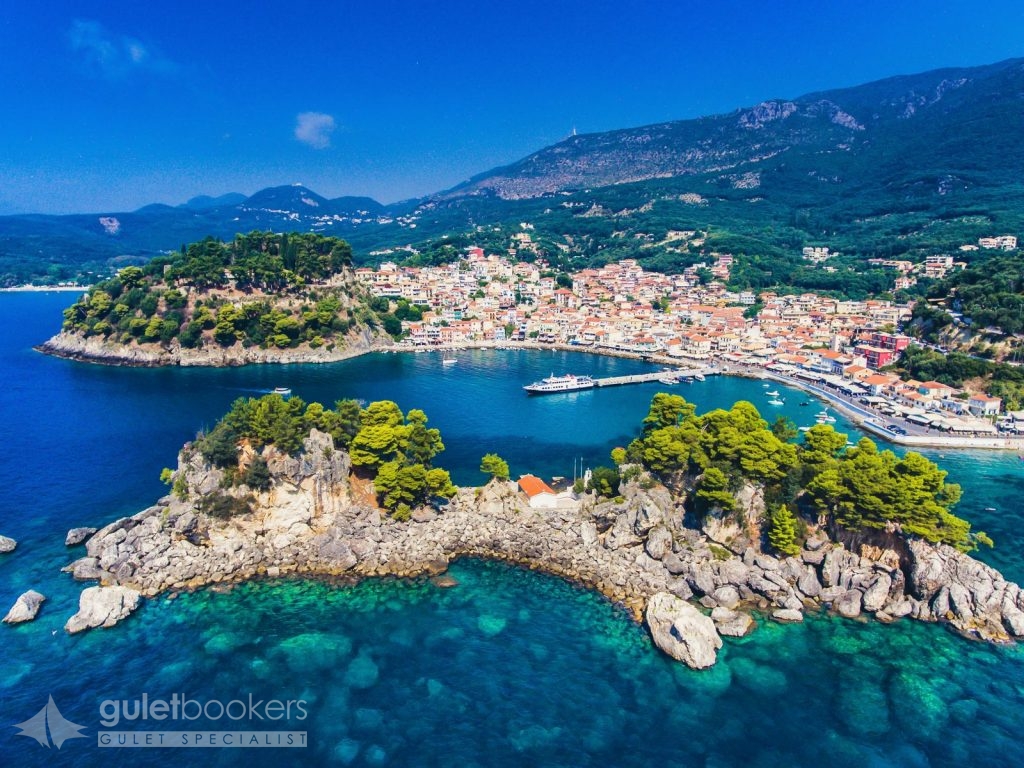
Parga is a famous seaside holiday resort as well as a famous seaside town of Preveza. It was built specifically for the amphitheater in a picturesque bay where the island of Panagia, in the woods, was hidden in the shadow of the Venetian’s castle. Stroll through the old town, where you can enjoy to visit the elite architecture, stroll through the beautiful arched cobbled stone streets, explore the neighborhoods full of flowers with picturesque small houses and colorful mansions, and enjoy a drink in the beautiful sunset scenery view of the turquoise waters of the Ionian Sea from the walls of Venetian. At sunset, take a romantic stroll along the seaside where the shops are located, small bars for a drink or a meal in a restaurant overlooking the bright castle and the island of Panagia.
Staying at the area of Parga, a village built in a verdant location strongly reminiscent of an island, with marvelous beaches and a cluster of small islets around it. Excursion boats connect Parga with destinations along the coastline, Syvota, Paxoi, Antipaxoi, and Corfu. When in Parga, there is an opportunity to have a daily boat trip to the Acheron River, the mythical “gate to the underworld”.
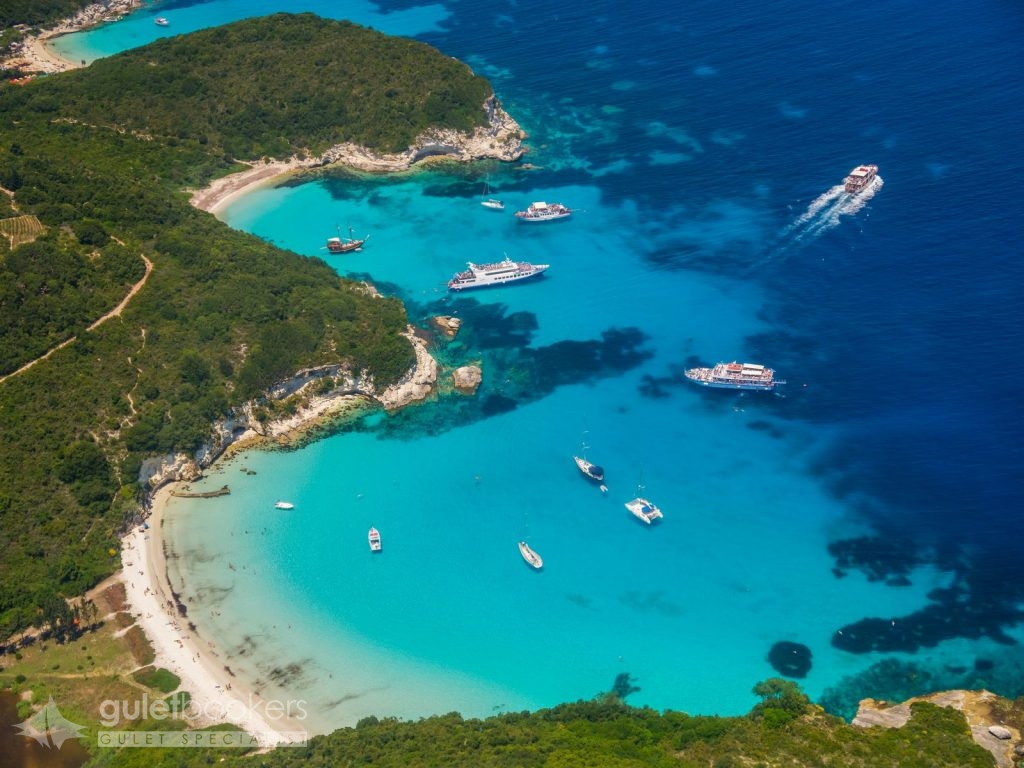
All that you need for a quiet, memorable vacation is on this island: lacy beaches, small coves, green hills with olive trees, imposing cliffs, sea caves and particularly interesting hewn stone cisterns otting the island. Its small size (area: 13 sq. km, coastline: 30 km) invites the visitor to explore it from end to end on foot. Tradition has it that Paxoi used to be part of Corfu Island until Poseidon tore it apart with his trident so that he may have a secluded spot to enjoy the company of his beloved Amfitriti. Under Venetian rule, commercial, maritime and agricultural activities thrived on the island.
Gaios is the island’s capital town and port, ideal for sun-and-sea vacations. The image of the port wedged in the narrow channel between Paxoi island and Agios Nikolaos isle is considered one of the prettiest in the Ionian Sea. There are cafés and fish tavernas by the pier.
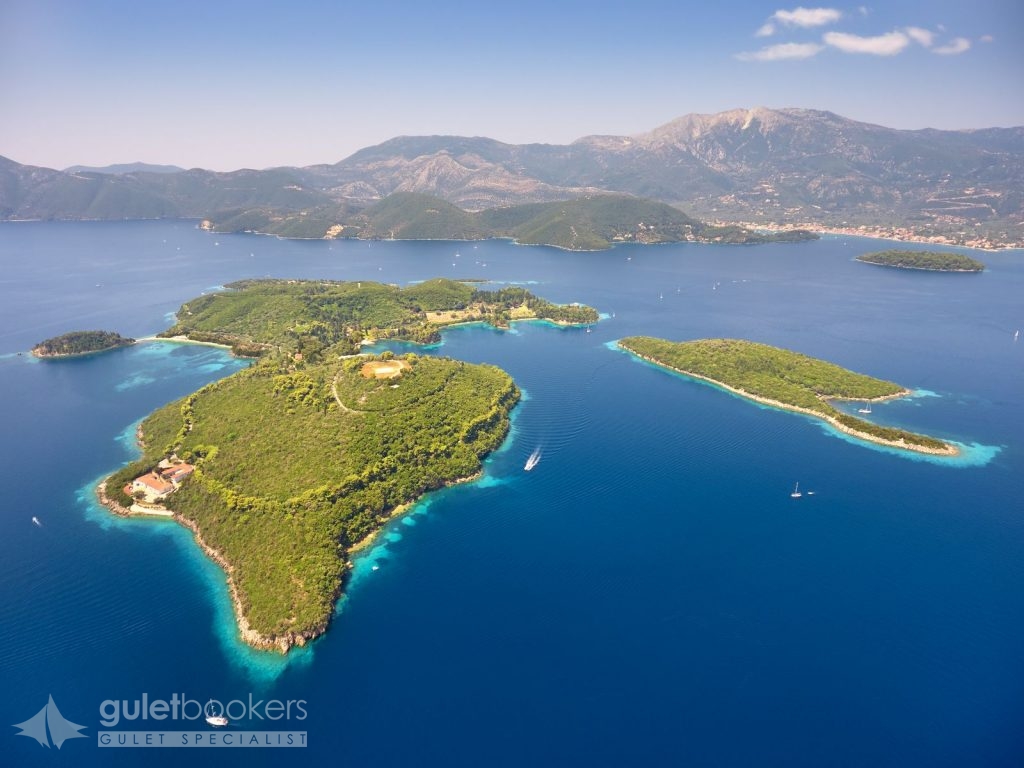
Lefkada or Leucas Island is surrounded by a total of 24 islets – Aristotle Onassis’ Skorpios being one of them. It connects to the opposite coast of Central Greece via a floating swing bridge (length: 50 m). The bridge offers easy access to Lefkada to visitors from all over Greece as it connects to parts of Egnatia Odos [Road] junction, Preveza-Aktio sea tunnel, Central Greece’s Aktio International Airport, and the ports in Igoumenitsa (Ipeiros) and Patras (Peloponnese). On Lefkada, you will find noteworthy sights, churches and monasteries, picturesque villages, lush vegetation, idyllic coves of turquoise waters, busy and secluded beaches of stunning beauty, significant cultural heritage, and hospitable locals. Up until the 6th c. BC, Lefkada was part of the Akarnania coastline. It owes its name to Lefkada, the cape with the towering rugged white cliffs on the island’s southern tip.
Lefkada has been inhabited since Neolithic times and flourished as a Corinthian colony. In 1204, after Constantinople’s occupation by the Franks, it became part of the Despotate of Epirus [Ipeiros]. Later on, the Turks, Venetians, French, and British occupied the island. In 1864, it became part of Greece along with the other Ionian Islands.
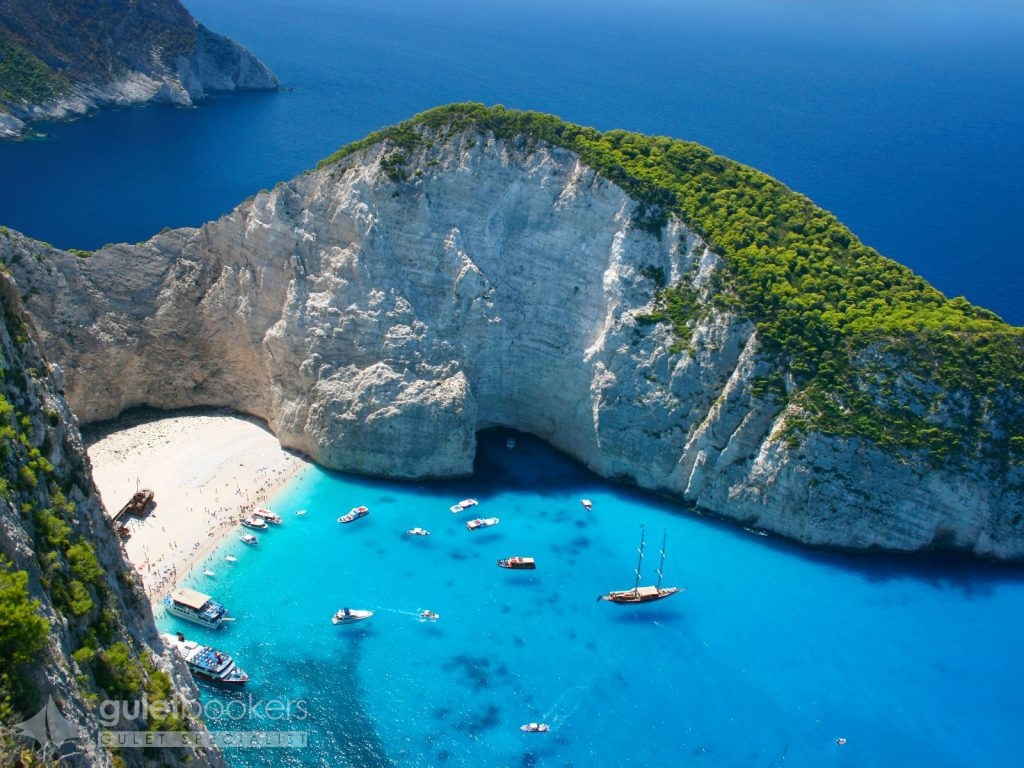
Zakynthos is a green island with fertile fields and a temperate climate. What makes it very interesting is the ever-changing countryside that has resulted in different types of beaches. On the island’s southeastern part you will find sheltered coves with sandy beaches of deep blue waters. However, if rugged cliffs and an interesting underwater world are to your liking, you should prefer the western part of the island.
The Venetians, who ruled Zakynthos from 1484 until 1797, called the island “Fioro di Levante” (flower of the East) as there are over 7,000 species of flowers on Zakynthos. The third largest island of the Ionian Sea, after Corfu and Kefalonia, is internationally known by the name of Zante. The island’s first inhabitant is said to have been Zakynthos, son of Dardanos, Frygia’s king. It is believed that he built an acropolis on the site where the Venetian fort was constructed at later times.
Venetian architectural influence has left its stamp on Zante despite the damage sustained due to the seismic activity in the area. After the ravaging 1953 earthquake and the ensuing fire, a number of historic buildings and churches burned to the ground. Consequently, the significant treasures these buildings were housing were buried in the ashes. The town of Zante was rebuilt according to an urban plan where strict anti-seismic regulations applied, and, to a large extent, adhered to the city’s former architectural character. In Zante rules also apply concerning the protection of the loggerhead sea turtle (Caretta – caretta) and the Mediterranean monk seal (Monachus – monachus).
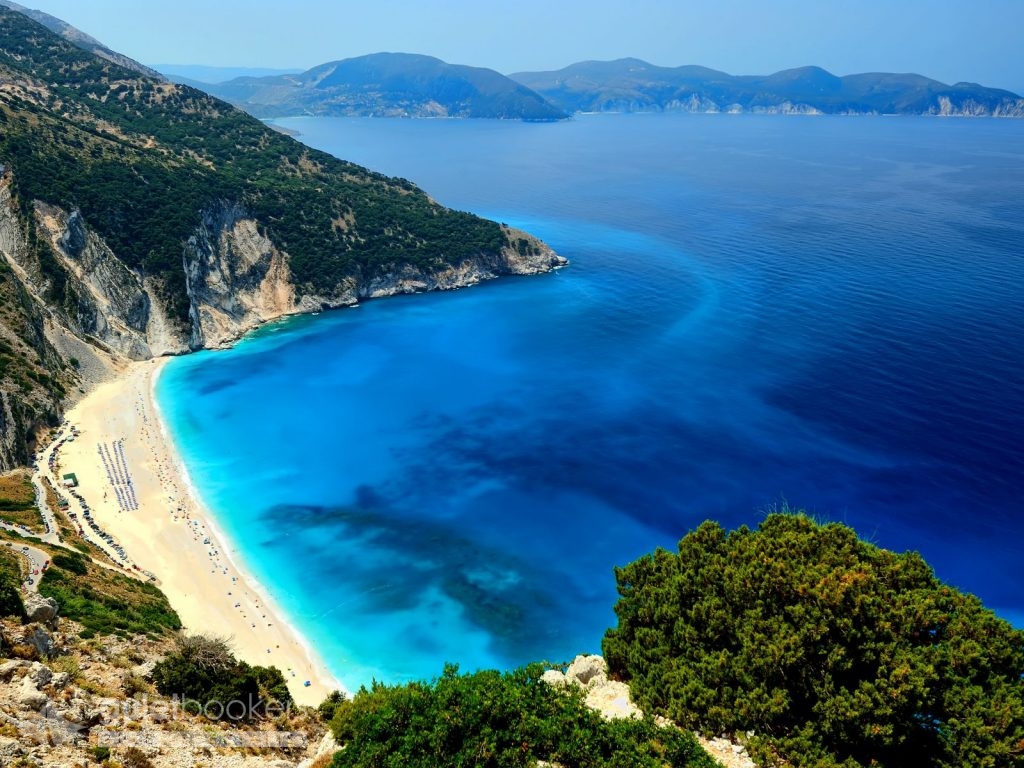
Magnificent scenery, amazing beaches, a rich cultural heritage, great monuments, mountains, castles, distant monasteries and the cheerful, hospitable people are the assets that have turned Kefalonia Island (or Cephallonia) into one of the most attractive destinations. The largest Ionian island lies in the mouth of Patraikos Gulf, between Zakynthos (or Zante) and Lefkada. It is endowed with an exquisite nature and diverse geological formations, countless coves, and lush vegetation. Ainos Mountain Range towers in the distance (a National Reserve area since 1962 with an abundant and diverse flora and fauna).
In Byzantine times, Kefalonia was part of both the Achaia province and the Eastern Illyria district. Throughout the centuries, it has successively been under Norman, Frankish, Venetian, and Turkish rule. It became Greek territory on May 21st, 1864, along with the rest of the Ionian Islands. During WWII, local resistance to Italians and Germans was sturdy. The film “Captain Corelli’s Mandolin”, shot on location on this island, is about such an account of resistance.
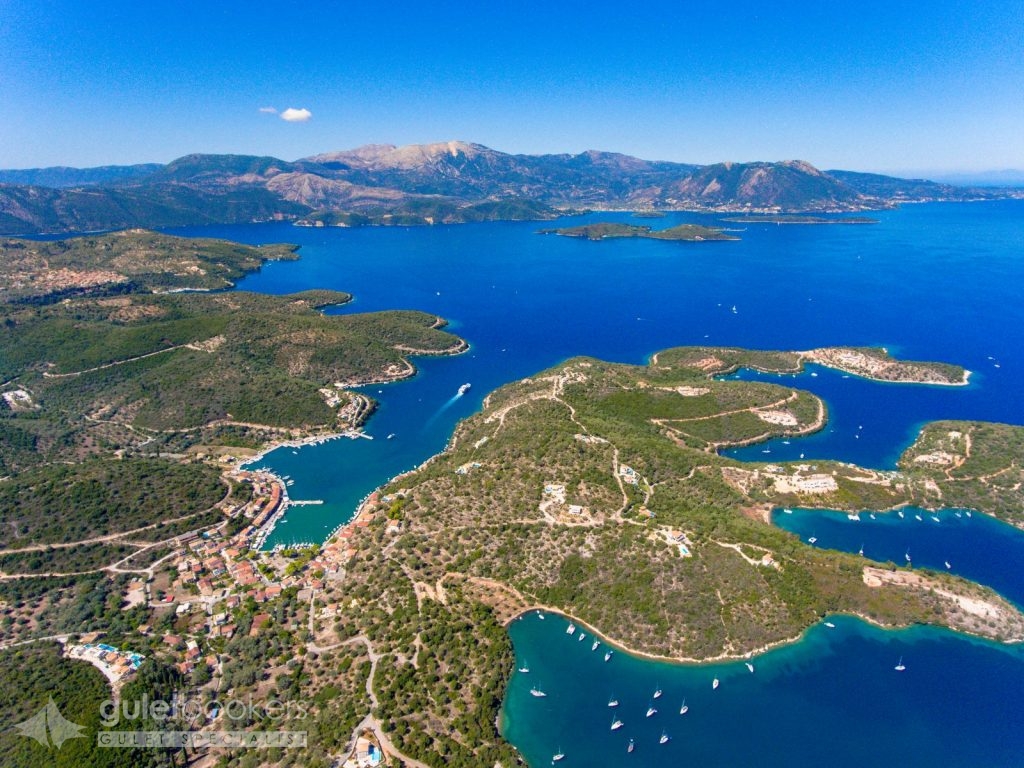
A green island (area: 20 sq. km; population: 1,100) lying 4 nautical miles away from Nydri with ferry runs to and from it. Tradition has it that this was the island of the ancient Tafioi. According to Homer, Odysseus [Ulysses] entrusted his ships to their king, Mentor, before departing for Troy. Other sources maintain that this is Asteris Island cited in the Homeric epics. There are three traditional villages, each with a picturesque harbour: Atherinos is the harbour in Katomeri village (the municipal seat); Vathy harbour bears the same name as the village and Spilia is the harbour in Spartochori village. On this island you will find some amazing beaches such as Ampelaki, Balos, Platigyali, Svourna, Kolopoulou, Dichali, Limonari, Elia and Limni. Most of the picturesque bays, mainly the northern ones, provide safe anchorage to sailing gulets.
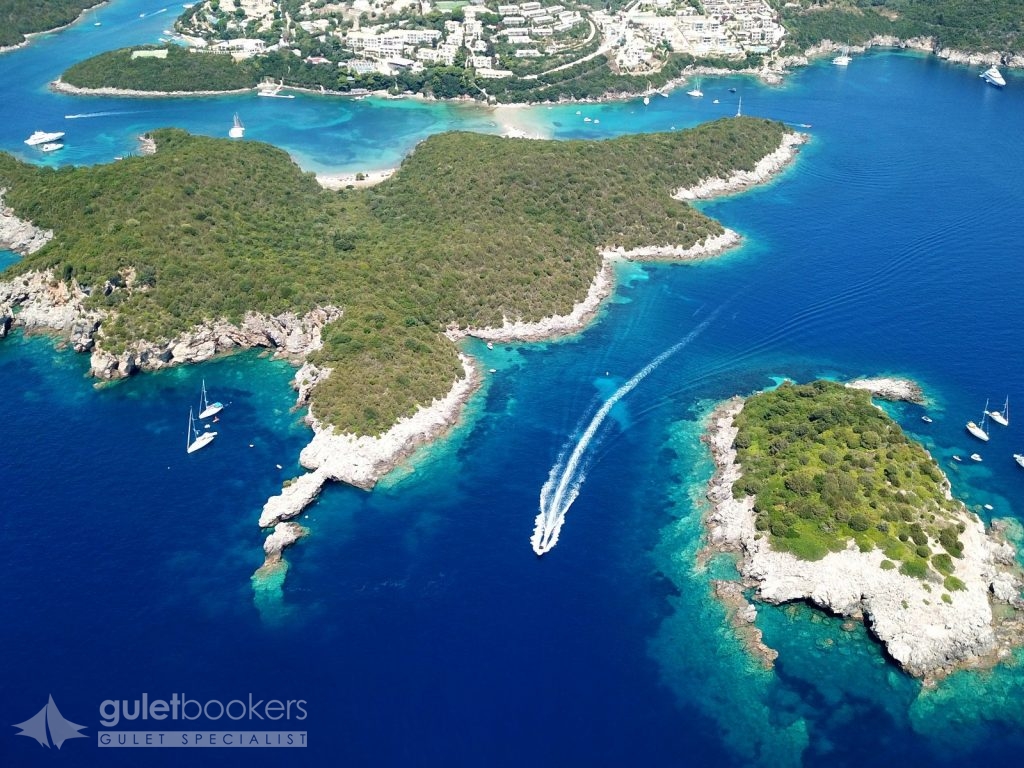
Thesprotia’s beautiful representative, green and blue, is the main reason Syvota is considered one of the most exotic places in Greece; indented shores, green islets, clear waters and hidden coves and long-sheltered beaches are just a few of the open features of the settlement nature. The Ionian Archipelago is a perfect stop for sailors and a must for anyone to visit. A short distance from the shore, you will find the small islands of Agios Nikolaos, Mourtemeno and other small islands, Mavro Oros (Black Mountain). Discover your own hidden coves or shores ( the favorite ones are Diapori and Alati beaches (Salt)) and let the magic of paradise catch you. The region’s most famous beach, Pisina (meaning pool), is located in Agios Nikolaos. You will enjoy fine white sand and green blue crysatl waters in beautiful green surroundings. You can catch a chance to visit Bella Vraka at Mourtemeno is the second 5-star beach in the area where you can approach from the mainland through a narrow golden sand strip by foot.
Send Enquiry Corfu – Paxos – Lefkada – Zakynthos
This itinerary is only bookable for private charters. If you are interested in a cabin charter, please contact us for more information.
Guletbookers is the independent gulet charter company located in Bodrum - Turkey and dedicated to giving you
the best gulet charter possible from the widest choice of gulets possible.
Get in touch via WhatsApp for Seamless Communication.
Talk to our experts and browse through more yachts.







